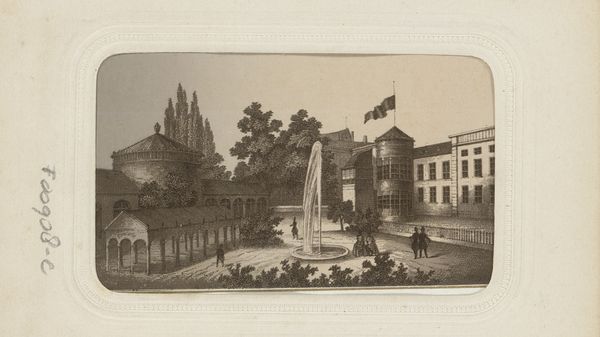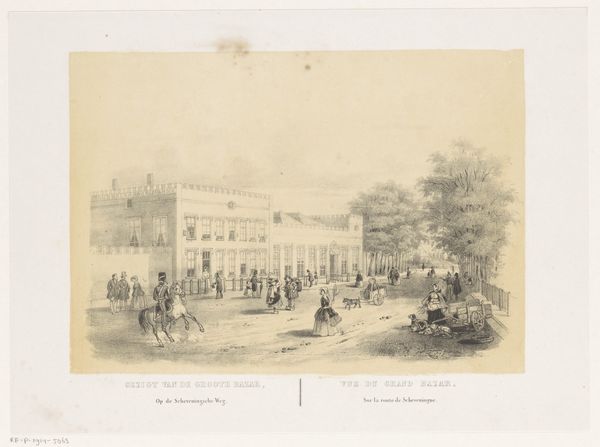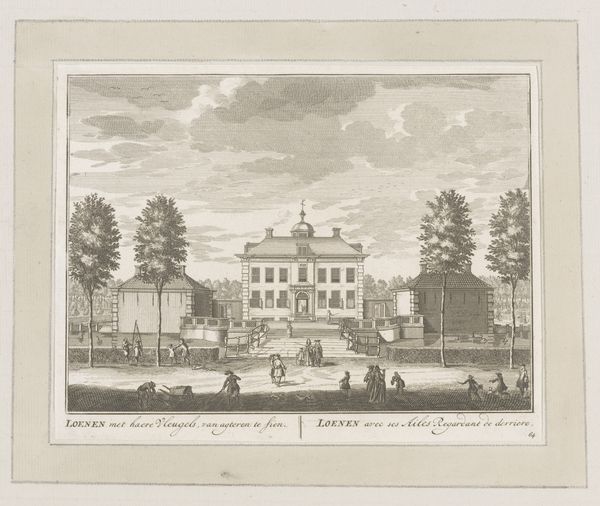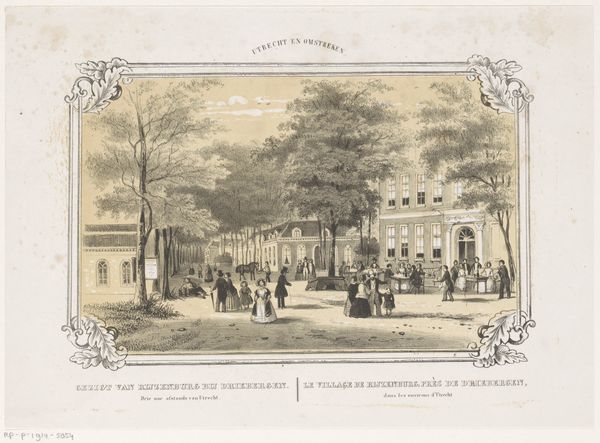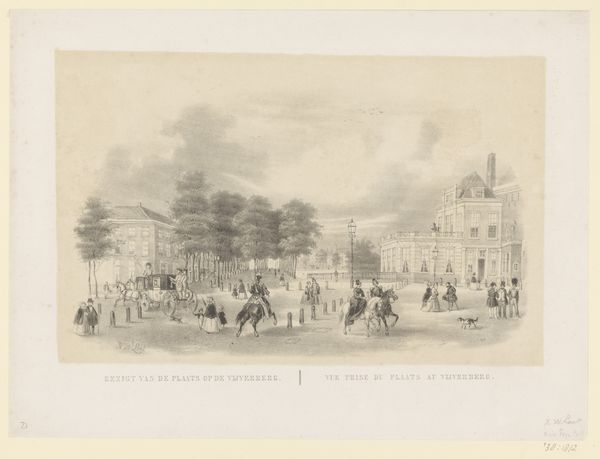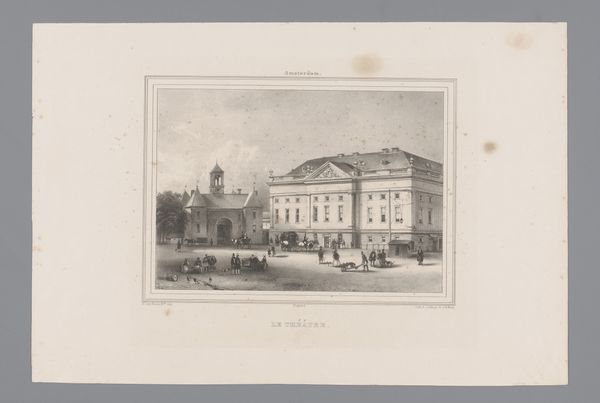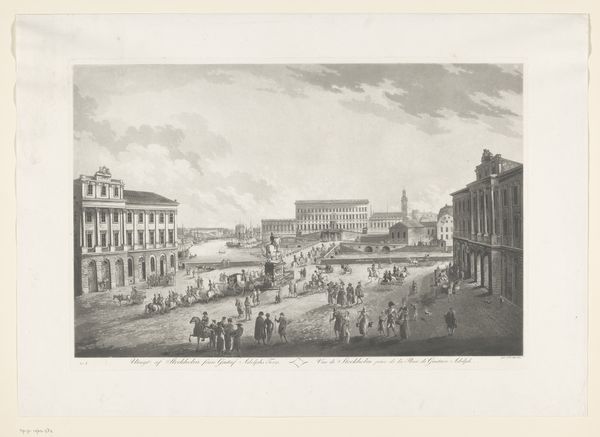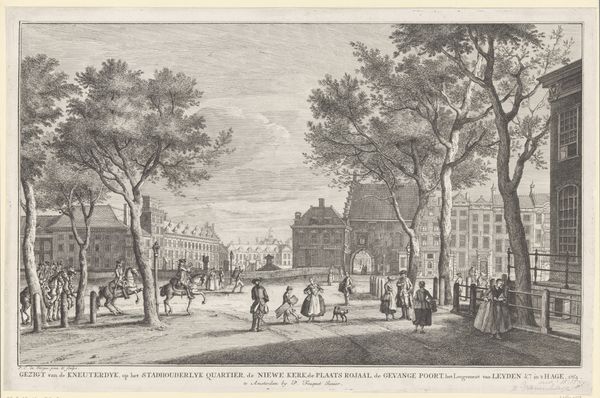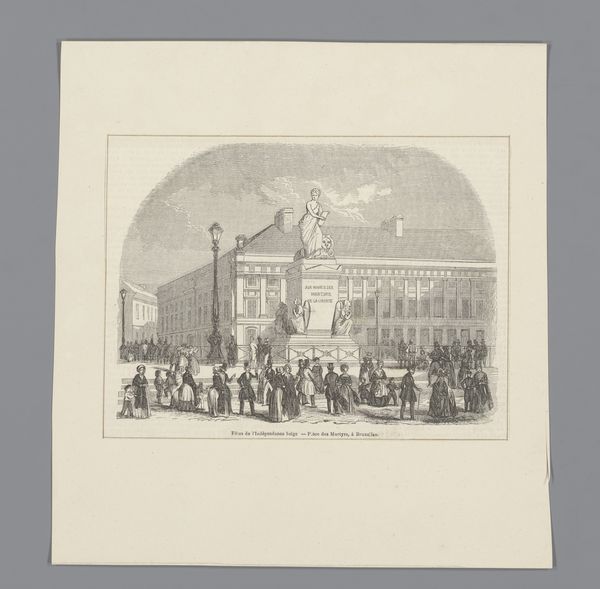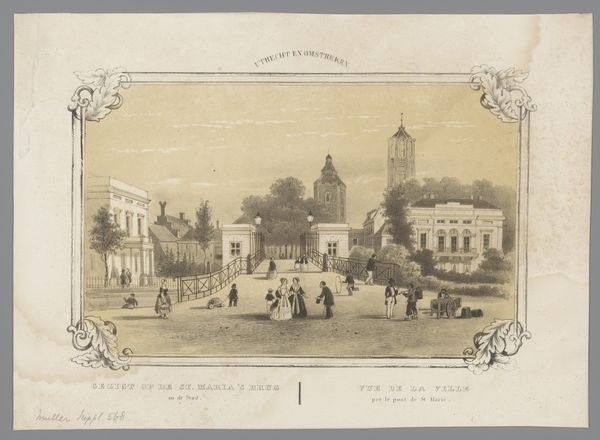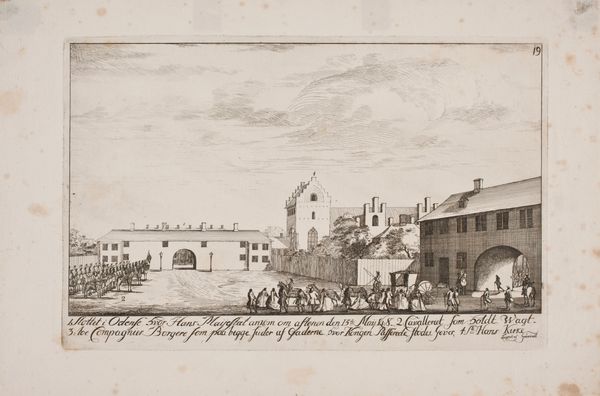
Zicht op het marmeren kruis en de zuil van paus Pius VII in Nice 1834
0:00
0:00
paulemilebarberi
Rijksmuseum
drawing, etching, paper
#
drawing
#
neoclacissism
#
etching
#
landscape
#
paper
#
column
#
cityscape
#
paper medium
#
watercolor
Dimensions: height 270 mm, width 365 mm
Copyright: Rijks Museum: Open Domain
Editor: This is "Zicht op het marmeren kruis en de zuil van paus Pius VII in Nice" by Paul-Émile Barberi, created in 1834. It’s a drawing and etching on paper. The meticulous details and tonal gradations really strike me; it has a formal quality. How would you interpret its structure? Curator: Note how Barberi structures the composition. Observe the interplay of light and shadow to define forms, and the balanced arrangement of elements—the marble cross, the column, and the buildings—within the picture plane. These create a visually satisfying harmony. How does the line work direct the viewer's eye? Editor: I see how the crisp lines create the edges of buildings and architectural details, really emphasizing their geometric forms. They almost feel like they define the *idea* of these objects. Curator: Precisely. Now, consider the materiality of the piece. As an etching, how does the artist utilise the specific qualities of the medium itself to convey texture and depth? Think about the difference between the smooth, polished surfaces he's depicting and the textured effect created by the etching process. Editor: That’s fascinating. I hadn’t thought about the contrast between what's depicted and how. I see now that the crosshatching creates a sense of depth that almost contradicts the clean lines of the architecture. It creates visual interest. Curator: The relationship between the real and the represented is fundamental here. This meticulous process, removed from pure representation, provides commentary, doesn’t it? It foregrounds the materiality of art-making itself. Editor: Absolutely. It seems Barberi directs us to not only *see* but also *analyze* what we are seeing, through a combination of structure and textures. Curator: Precisely. This focus enables viewers to appreciate the artist’s formal decisions, encouraging critical reflection on artistic process, and, in this case, architectural form.
Comments
No comments
Be the first to comment and join the conversation on the ultimate creative platform.
